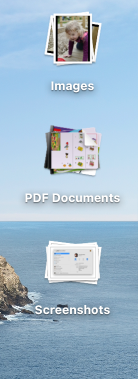Many people use there desktop as their filling system. Everything goes there; downloads from the web, the presentation for work, their CV, and the new set of photos from their recent trip to the Greek islands.
Slow Mac? Is your Desktop Full of Stuff?
The desktop was never designed to be a permanent storage location, its purpose was to be a temporary store for the things that you are working on now. With this design intent, the Operating System (OS) caches the contents of the desktop into RAM, which is the working memory of the computer.
Think of RAM as a jug of a certain capacity. Every task that the OS is asked to do is the liquid that fills it. When the OS is asked to do something new it looks at the capacity of the jug and works out if there is enough free space to add the new task. If there is not enough free space then the OS uses a small temporary container to pour out some of the liquid from those current tasks to free up space for the new task. This process is called a ‘page-out’ and takes some time to accomplish.
Cached files such as those from the desktop, get allocated a part of the jug that doesn’t get poured out when new tasks require space in the jug. Thus the more files you have on your desktop, the less space there is for the ‘tasks’ your computer is being asked to do now, which results in more ‘page-outs’ and slowing the machine down.
I once had a customer who had accidentally managed to drag the entire contents of his photos library to the desktop. That was a lot of images, and a lot of files to be cached. The result - his machine couldn’t complete the log in process due to his RAM jug being completely full effectively making his Mac unusable.
So, if you want your machine to run swiftly, make sure you use your desktop correctly as a temporary store, and file those other documents where they belong under your home folder.
Desktop Organisational Tips
Curating your Desktop has proven to be the best method for keeping it organised and thus performant. Only store there the items that you are currently using and when you are done with them either file them back to an appropriate location elsewhere on your drive or move them to the trash. However there are also several other things that you can do to help keep your desktop under control:
Stacks
Introduced in Mojave (MacOS 10.14) Stacks will automatically organise the files on your desktop into defined categories. This allows them to take up much less screen space on the desktop and aiding you in curation of your files. To access the files in a stack you simply click on it and the Stack will unfold to reveal it's contents. There are several options to organise the files by, the default being 'File Type'.

To enable stacks right click (or ctrl + click) a blank space on the desktop and click on Use stacks from the resulting menu. Just underneath the Use stacks option is a fly out menu called Group Stacks By. Click on this to select the method by which you would like to organise your stacks.

View Options
MacOS has long been able to help you with desktop organisation, so even if you are not running the latest OS there are plenty of options available to you under the View Options settings. To access them right click (or ctrl + click) on a blank space on the desktop and select View Options from the resulting menu.
The settings in the View Options are as follows:
- Stack by - A drop down that allows you to select the category you would like stacks to be organised in on the desktop. I personally find Kind to be the best option as it allows me to quickly and easily locate files of a certain type.
- Sort by - A drop down that allows you to select the way in which you would like files within a stack to be sorted.
- Icon Size - A slider which allows you to adjust the size at which icons are displayed on the desktop.
- Grid Spacing - All of the icons on the desktop are arranged on top of a grid, so if you want the icons to sit closer or further apart then you would adjust it using this slider.
- Text Size - This adjusts the point size of the text label which is displayed alongside the icon.
- Label Position - The location for the text label next to each icon.
- Show item info - Tick this box if you wish to have information about the file displayed alongside the icon. Information varies per file type to show you the most pertinent information for it.
- Show icon preview - tick the box if you wish the icon to be a small representation of the file or untick if you wish just to display a generic icon for the file type.

Quickly Access Folders from the Desktop
If you want to be able to quickly access a file or folder from the desktop but don't want it's contents to be cached to RAM, create an Alias of that item to the desktop. The quickest way to do this is to drag the file or folder to the desktop but before you release the cursor press the Option and Command keys (⌥ + ⌘). The file will display a little outward pointing arrow to show that an alias will be created.

